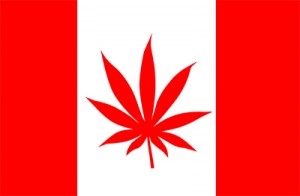Canada: The Drug Trade’s Northern Frontier
 With public attention focused on narco-trafficking across the U.S.-Mexico border, relatively little attention has been given to the illicit activities transpiring along the United States’ border with its larger and less infamous North American neighbor, Canada. The U.S.-Canada border is immense and quite rugged geographically, which makes it problematic to patrol. Smuggling drugs southward past law enforcement officials is not exceedingly difficult, and as a consequence, large quantities of Canadian marijuana and, more recently, ecstasy are entering the American drug market.
With public attention focused on narco-trafficking across the U.S.-Mexico border, relatively little attention has been given to the illicit activities transpiring along the United States’ border with its larger and less infamous North American neighbor, Canada. The U.S.-Canada border is immense and quite rugged geographically, which makes it problematic to patrol. Smuggling drugs southward past law enforcement officials is not exceedingly difficult, and as a consequence, large quantities of Canadian marijuana and, more recently, ecstasy are entering the American drug market.
In 2008, Canada seized 899 kilograms of cannabis resin, accounting for almost half of resin seizures in the Americas; in 2009, this figure soared to 9.7 metric tons. According to a United Nations report, greenhouse cultivation of marijuana is limited to the U.S. and Canada, highlighting the productive capabilities of the two countries. The highly profitable Canadian marijuana industry is almost completely dependent on U.S. demand for the drug—60-90 percent of Canadian-grown cannabis is smuggled into the U.S. The bulk of production occurs in British Columbia, where highly-potent “B.C. bud” is cultivated in an extensive greenhouse network with a labor force that numbers in the hundreds of thousands. The industry is so lucrative that some calculations estimate marijuana contributes over USD 20 billion to the Canadian economy, which would make the herb Canada’s single largest agricultural product. Canada has also quickly become a large supplier of ecstasy, and the United Nations report claims that a “significant share” of the drug produced in Canada is destined for the U.S. The Canadian boom in ecstasy production has followed a decrease in Western European production; from 2004-2006, seizures of the drug being smuggled from Canada to the U.S. increased fivefold, from 1.1 million dosage units to 5.2 million.
To move Canadian-produced narcotics into the U.S., traffickers utilize a myriad of vehicular means, including private airplanes, helicopters, boats, floatplanes, cattle trucks, and even snowmobiles. The U.S.-Canada border spans an immense 4,000 miles, twice the length of its U.S.-Mexico counterpart. Yet, as recently as 2009 it was patrolled by only one-tenth the number of border agents. A particularly high-volume smuggling route transects the Akwesasne Mohawk Indian reservation, which is private, unpatrolled land. However, in a June sting, the reservation was raided by the Royal Canadian Mounted Police in response to concerns from the Aboriginal community. While not as severe as the situation in Mexico, Canada’s gang-related violence over smuggling routes is still a serious problem; gangs such as the Red Scorpions have been responsible for dozens of killings in Canada over the last few years.
To combat the trafficking, American and Canadian officials have increased the number of agents along the U.S.-Canada border in the past three years. The Border Patrol is now equipped with a variety of vehicles, including boats, aircraft and ATVs designed to intercept U.S.-bound drugs. Additionally, the U.S. Drug Enforcement Administration (DEA) and U.S. Immigrations and Customs Enforcement formed an agreement that will allow the latter to assign more agents to drug investigations along both U.S. borders.
Adding fuel to the incendiary debate over marijuana legalization in Canada, an Ottawa court in April determined that the Medical Marijuana Access Regulations program was unconstitutional. Judge Donald Taliano determined that the program, aimed at providing medical marijuana to the ill, was undermined by the unwillingness of doctors to prescribe the drug. In November, Ontario’s highest court will review the case. While marijuana legalization has support in Canada, it is unclear whether legalizing the drug will alleviate gang-related violence, as Canadian gangs would still battle for smuggling routes into the U.S., where marijuana remains illegal in most states.
The essential truth remains that as long as there is high drug demand in the U.S., illicit drug trafficking across both of the country’s borders will continue unabated. Current policies to combat narco-trafficking have proven ineffective, and as the War on Drugs debacle drags on toward an uncertain outcome, hope for mitigation creeps further and further out of reach.
Written by COHA Research Associate Tristan Mohabir
This is the second issue in a four part series on the narcotics trade that will discuss the industry from a variety of different angles.

